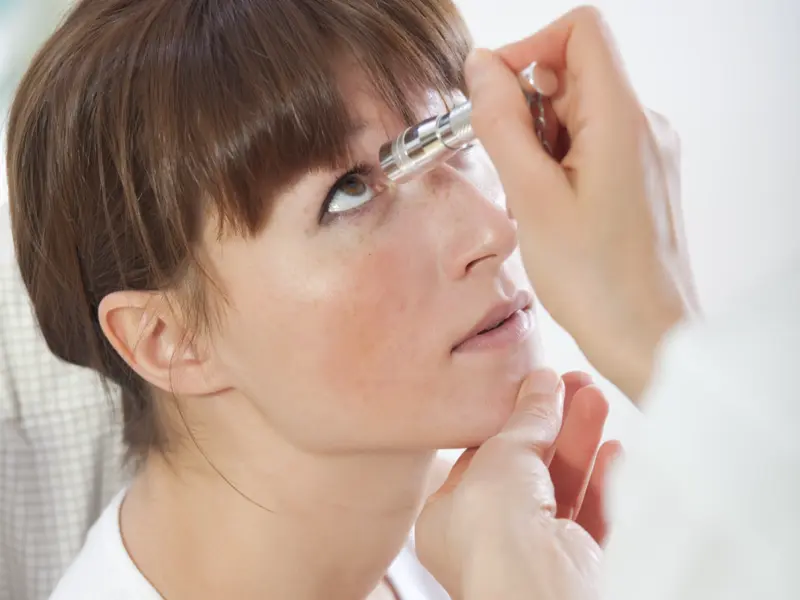
#LIVE2.0 #Review
A person can develop type-2 diabetes at any age, even childhood, and can damage different organs of the body due to high blood glucose levels.
The long-term effects of diabetes include damage to large (macrovascular) and small (microvascular) blood vessels, which can result in a heart attack, damage kidneys, eyes, gums, feet, and nerves.
Diabetic retinopathy is an eye disease that affects blood vessels in the retina (the light-sensitive layer of tissue), and can even cause vision loss for diabetic patients.
According to the National Institute of Health “Diabetic retinopathy is termed the most common diabetic eye disease and a leading cause of blindness in American adults.”
“From 2010 to 2050, people with diabetic retinopathy are expected to nearly double, from 7.7 million to 14.6 million in the U.S.”
To see more detailed state-by-state prevalence rates of diabetic retinopathy for the U.S population click here.
Though diabetic retinopathy can be categorized as the most common cause of vision loss for diabetic patients, several other types of eye conditions can be caused by diabetes such as:
High levels of blood sugar can damage the tiny blood vessels present within the eye. In the process, the retina present inside the eye can suffer from various types of problems, collectively referred to as “microvascular abnormalities”.
These microvascular abnormalities make the tiny vessels present in the retina expand unnaturally and can rupture these blood vessels, resulting in blood leakage.
This phenomenon is known as “microaneurysms”, and is the first sign or symptom of diabetic retinopathy.
Microaneurysms as mentioned earlier are said to be the first clinical sign of diabetic retinopathy.
An eye condition that appears in the form of tiny red dots with yellow rings surrounding them in the superficial retinal layers, that are the result of vascular leakage.
It is hard to distinguish microaneurysms from internal bleeding because both appear as small round areas of similar dimensions, with a dark red color.
Such microvascular abnormalities can cause blurry vision, as the leaked fluid flows into the macula because of the damaged blood vessel. This further creates new blood vessels to form on the surface of the macula causing blood leakage into the back of the eye, blocking vision and causing vision loss.
Unfortunately, diabetic retinopathy currently has no cure, and can only be treated to help slow the progression of the condition.
Preventive measures such as exercise, a change in diet can help manage blood sugar levels preventing the eye from being damaged.
Microaneurysms are regarded as the earliest signs of diabetic retinopathy, which makes its early detection through a dilated eye exam incredibly important to lower the chance of vision loss.
No apparent symptoms appear in the early stages of diabetic retinopathy for most people with diabetes. While some may notice minute changes in their vision such as experiencing difficulty in reading or seeing faraway objects, these changes may come and go.
However, in the later stages, blood vessels found in the retina may start to bleed into the vitreous (a gel-like fluid in the eye) severely damaging the eye.
This will cause visual impairment such as seeing dark floating spots which may clear up with time. Yet, it is highly important to get treatment as the bleeding can start again and get worse, causing scarring.
Some of the common symptoms include:
As already established, diabetic retinopathy can damage eyes in multiple ways, but did you know that it can lead to other serious eye conditions? Let’s find out how:
Diabetic Retinopathy is a disease prevalent in people with any sort of diabetes, be it type 1 or type 2, and even gestational diabetes (commonly found in females during pregnancy).
Women diagnosed with gestational diabetes have a higher risk of getting diabetic retinopathy, as well as women with diabetes before the pregnancy.
A healthy pregnancy is crucial for the baby’s development, which makes it even more important for women to seek a comprehensive dilated eye exam as soon symptoms of reduced visual acuity start to appear.
The eye specialist or ophthalmologist may also recommend some other additional eye exams to get a more comprehensive report on vision health.
More than half of diabetic patients develop diabetic retinopathy as the risk of contracting this disease increases the longer a person has had diabetes.
Simultaneously controlling diabetes and blood sugar levels will lower the risk for diabetic patients to develop diabetic retinopathy.
Diabetic patients should get regular eye examinations and monitor their vision health from time to time to avoid conditions that may cause irreversible damage or lead to blindness.
Eye specialists use a simple and painless test to check the eyes for any signs or symptoms of diabetic retinopathy or other eye conditions. This simple examination is called dilated eye examination, a process in which a doctor uses eye drops to dilate or widen a patient’s pupil to further investigate and check for any signs of an eye disease.

Another test that the doctor may recommend is a fluorescein angiogram, used to diagnose patients with diabetic retinopathy or DME to examine the condition of the blood vessels present in the retina.
Diabetic patients should get routine eye checkups and examinations to monitor any signs or symptoms as early detection and treatment of an eye condition may slow down the progression as well as stop the damage and prevent complete vision loss.
Support
See and Connect Today!
IrisVision Global, Inc.
5994 W. Las Positas Blvd, Suite 101
Pleasanton, CA 94588
Email: [email protected]
Support: +1 855 207 6665
Support
See and Connect Today!
IrisVision Global, Inc.
5994 W. Las Positas Blvd, Suite 101
Pleasanton, CA 94588
USA Email: [email protected]
Support: +1 855 207 6665
Support
See and Connect Today!
IrisVision Global, Inc.
5994 W. Las Positas Blvd, Suite 101
Pleasanton, CA 94588
Email: [email protected]
Support: +1 855 207 6665